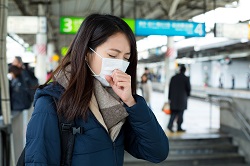New tools to prevent the spread of high threat pathogens in transport hubs
In 2014 there were 3.3 billion flights around the world, 44 % of which were long haul. Furthermore, the number of airline passengers is forecast to double over the course of the next 15 years, meaning the risk of the quick and – at times – uncontrollable spread of naturally or intentionally released person-to-person transmissible pathogens, such as Ebola and anthrax, is on the rise. More so, although air travel is the main culprit for the global spreading of these pathogens, the risk is not limited to the skies. The high-density mass transport systems found in many European cities also help accelerate the spread of infectious diseases. Proactive pathogen prevention PANDHUB, an EU-funded research project, has taken a proactive approach to pathogen prevention. The project has aimed to support transport operators and relevant stakeholders in developing pathogen preparedness and response plans for such transport hubs as airports, major metro interchanges and railway stations. As a starting point, PANDHUB set out to identify the so-called ‘hotspots’ that exhibit a higher risk for the transmission of microbes via breathing, sneezing and touching. The project identified these hotspots by studying the potential routes by which infections are transmitted, passenger flows, and the unique characteristics of transportation hubs. Based on this study, PANDHUB researchers discovered that the transmission of infectious diseases depends on many factors, including the route of transmission, virulence of the microbe and susceptibility of the exposed passenger. The good news is that in normal circumstances, the risk of transmission on public transport is low and requires no special action beyond basic personal hygiene. The bad news, however, is that those locations exhibiting an increased risk tend to be ill-prepared to handle an epidemic. Validated guidelines and toolboxes To remedy this gap in preparedness, the project has developed validated pandemic guidelines and mobile, integrated toolboxes that contain modelling components to simulate the spread of diseases and to evaluate the effects of suggested countermeasures. Based on the impact these simulations have, the project is developing tailored rapid response plans to mitigate risks, contain incidents and, ultimately, save lives. In addition, PANDHUB is producing detailed instructions on how to effectively cut off different routes of transmission, along with guidelines for protecting, cleaning and decontaminating passengers and facilities. Due to the open borders of the EU and the fact that many transportation systems cross regional and national frontiers, the risk of a cross-border incident is particularly high in Europe. For this reason, PANDHUB’s work pays special attention to cross-border cooperation, including the coordination of data collection and the collation of tools and information. As a result, the project facilitates a swift, coordinated cross-border epidemiological investigation and response. A team effort Producing such complex, broad and multi-national guidelines and tools is challenging and thus demands a multidisciplinary approach. As a result, all of PANDHUB’s tools are being developed in close collaboration with a Stakeholder Liaison Group comprised of transport staff, experts, government authorities and end users. The proposed toolbox is currently undergoing wide testing through field exercises and workshops, with feedback being taken into account for the validation and further development of the tools. For more information please see: PANDHUB project website(opens in new window)
Countries
Finland



